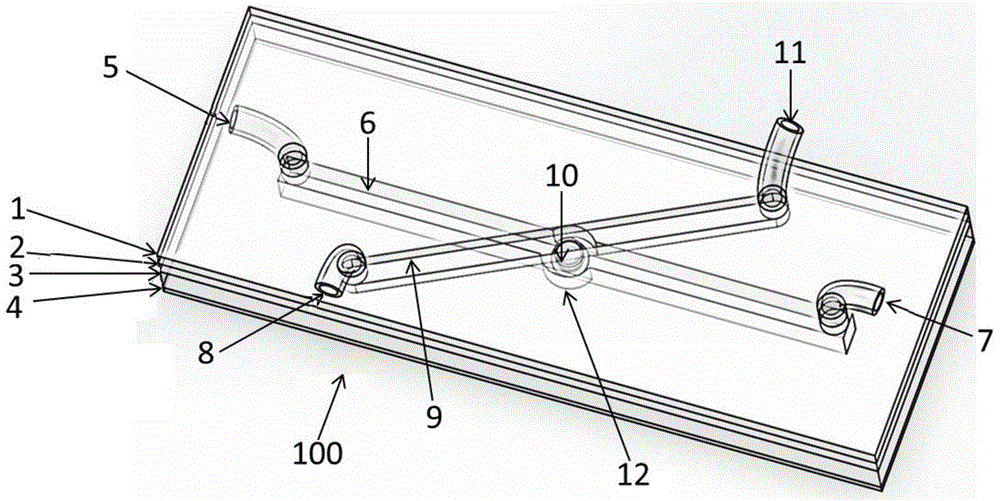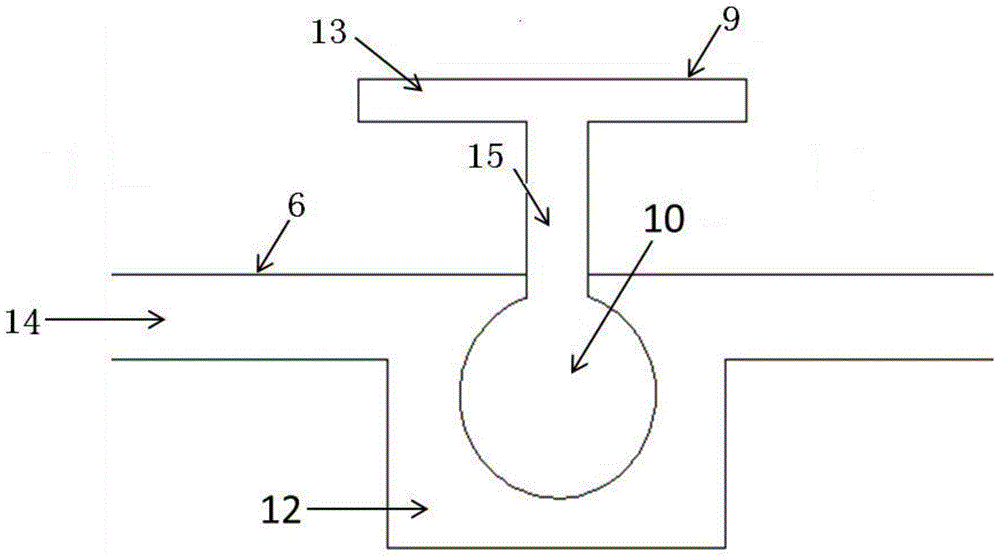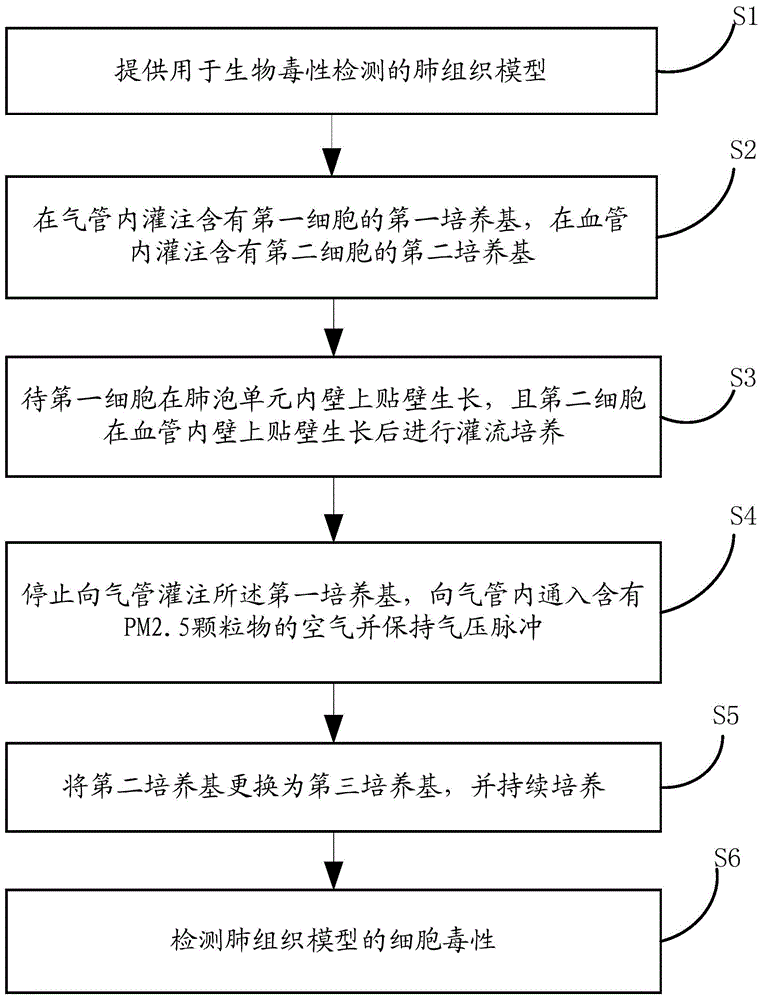Lung tissue model for biotoxicity detection and biotoxicity detection method
A technology of biological toxicity and detection method, applied in the field of biomedicine, can solve the problems of lack of three-dimensional characteristics of lung tissue in vivo, inability to accurately characterize the biological toxicity of nanoparticles, not being PM2.5, etc.
- Summary
- Abstract
- Description
- Claims
- Application Information
AI Technical Summary
Problems solved by technology
Method used
Image
Examples
Embodiment 1
[0108] This implementation is to evaluate the pulmonary toxicity of PM2.5 by constructing a lung tissue model.
[0109] 1. Introduction of lung tissue model
[0110] The lung tissue model in this embodiment is a chip structure. The lung chip device is mainly composed of three parts: trachea, blood vessel and alveolar unit. The trachea is a channel with a diameter of 200 microns, which is connected to the interior of the alveolar unit. Blood vessels are channels 200 microns in diameter that connect to the exterior of the alveolar unit. At the position connected to the alveolar unit is a cylindrical cavity structure with a diameter of 300 microns and a depth of 300 microns. Its inner wall is cultured with endothelial cells. The alveolar unit is a hollow spherical structure with a diameter of 200 microns and a membrane thickness of 10 microns. In addition, the alveolar unit membrane has a porous structure, and lung epithelial cells are cultured on the inner surface of the mem...
Embodiment 2
[0129] In this implementation, drug pulmonary toxicity evaluation is performed on the basis of the lung tissue model constructed in Example 1.
[0130] 1. Introduction of lung tissue model
[0131] The lung tissue model in this embodiment is the same as the lung tissue model in Embodiment 1, and will not be described in detail here.
[0132] 2. Manufacture and use of lung tissue model
[0133] In this example, 1. Chip manufacturing and culture process, 2. Material preparation process, 3. Chip printing process, 4. The steps of perfusing cells to construct a lung tissue model are the same as steps 1, 2, 3 and 4 in Example 1 , which will not be described in detail here.
[0134] 5. To detect the biological toxicity of the drug
[0135] Remove the medium supply of the gas channel, change it to normal air, and maintain a 0.3HZ air pressure pulse, so that the alveolar units can shrink and expand regularly; change the medium of the blood channel to EBM-2 and RPMI-1640 medium 1:1 ...
Embodiment 3
[0137] In this implementation, on the basis of the lung tissue model constructed in Example 1, pulmonary toxicity evaluation of inhaled drugs was carried out.
[0138] 1. Introduction of lung tissue model
[0139] The lung tissue model in this embodiment is the same as the lung tissue model in Embodiment 1, and will not be described in detail here.
[0140] 2. Manufacture and use of lung tissue model
[0141] In this example, 1. Chip manufacturing and culture process, 2. Material preparation process, 3. Chip printing process, 4. The steps of perfusing cells to construct a lung tissue model are the same as steps 1, 2, 3 and 4 in Example 1 , which will not be described in detail here.
[0142] 5. Test the biological toxicity of inhaled drugs
[0143] Remove the medium supply of the gas channel, change it to normal air, and maintain a 0.3HZ air pressure pulse, so that the alveolar units can shrink and expand regularly, and change the medium of the blood channel to EBM-2 and R...
PUM
| Property | Measurement | Unit |
|---|---|---|
| size | aaaaa | aaaaa |
Abstract
Description
Claims
Application Information
 Login to View More
Login to View More - R&D
- Intellectual Property
- Life Sciences
- Materials
- Tech Scout
- Unparalleled Data Quality
- Higher Quality Content
- 60% Fewer Hallucinations
Browse by: Latest US Patents, China's latest patents, Technical Efficacy Thesaurus, Application Domain, Technology Topic, Popular Technical Reports.
© 2025 PatSnap. All rights reserved.Legal|Privacy policy|Modern Slavery Act Transparency Statement|Sitemap|About US| Contact US: help@patsnap.com



